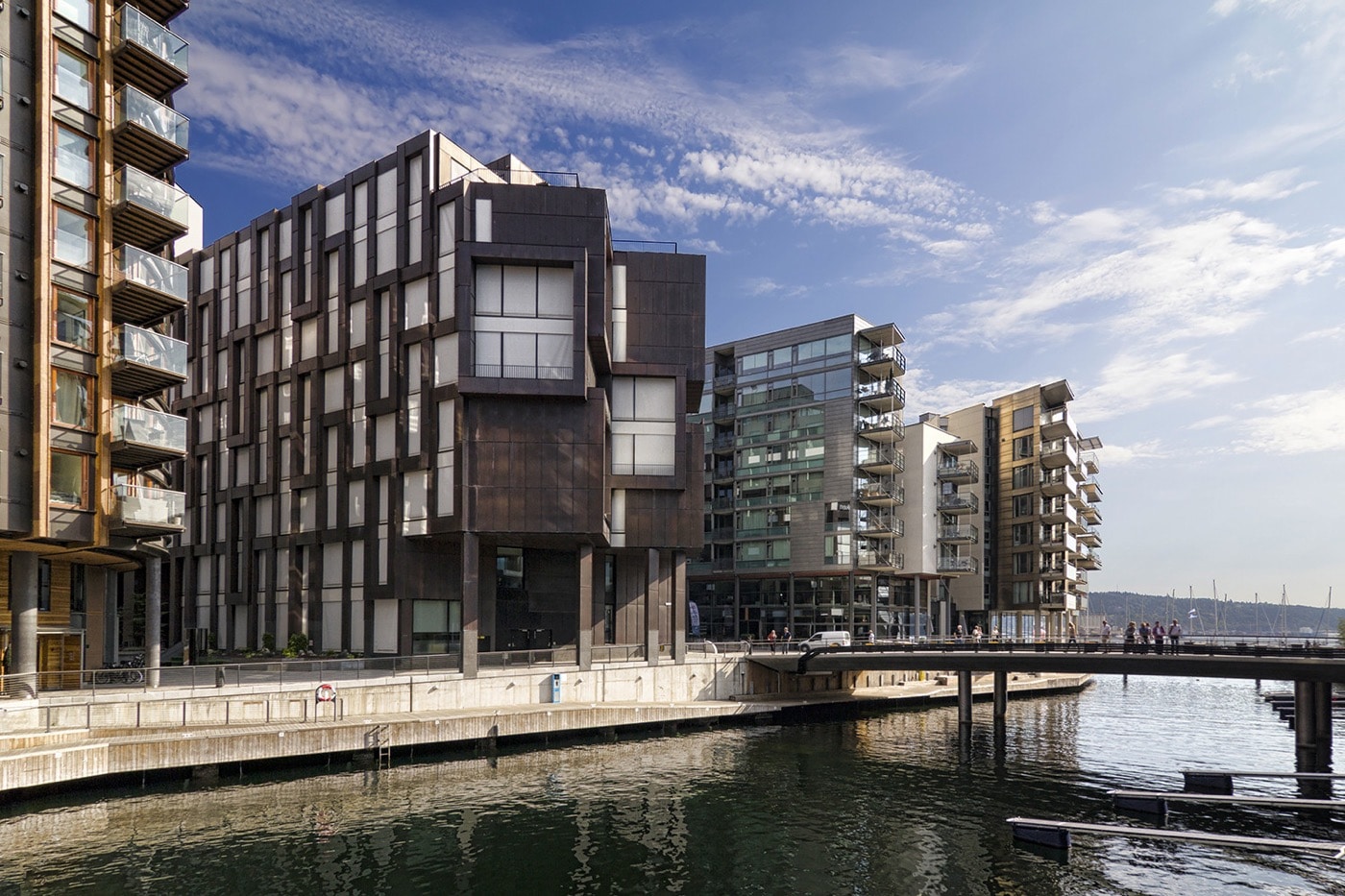Snug by Oslo’s downtown harbor, it was once the city’s most disreputable corner. In the 18th century, Tjuvholmen—meaning Thief Island—was a shadowy haunt of rascals and reprobates. The quarter’s only redeeming feature was its site: several small islands jutting into the broad blue Oslofjord. But, for smugglers, that splendid waterway was just a means to an end—a thoroughfare for shipping ill-gotten goods to scores of islands dotting the fjord or beyond to the North Sea.
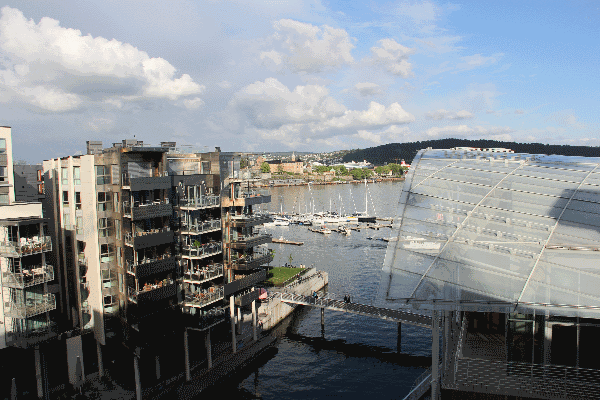
Over the years, Tjuvholmen—the “t” is silent—has been through several incarnations, as a warehouse district, as a shipyard, as a port authority and as pastureland for the bovine-loving Mrs. Krogh. Today, Tjuvholmen is one of Scandinavia’s trendiest arts districts. The new Astrup Fearnley Museum, designed by celebrity architect Renzo Piano, opened in late September 2012. Three months later, The Thief, a stylish design hotel, flung open its doors. They joined art galleries, trendy eateries, and two of Oslo’s top tables, Fru K and Tjuvholmen Sjømagasin.
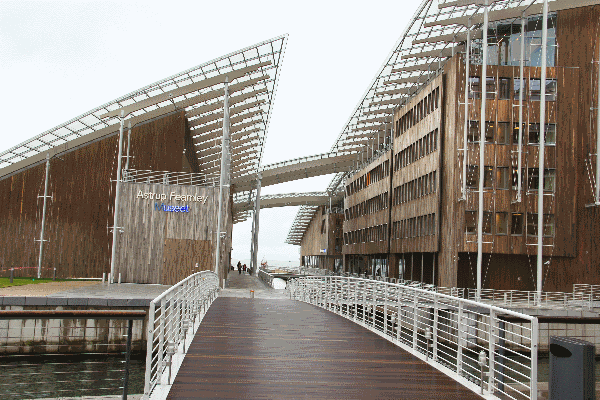
The first stage in an ambitious harbor redevelopment project called Fjord City, Tjuvholmen was carefully planned as a multi-use neighborhood—commercial, residential and recreational. First came the law firms, bank headquarters and high-rise apartments. Then came the restaurants and art galleries, which draw droves of locals and visitors.
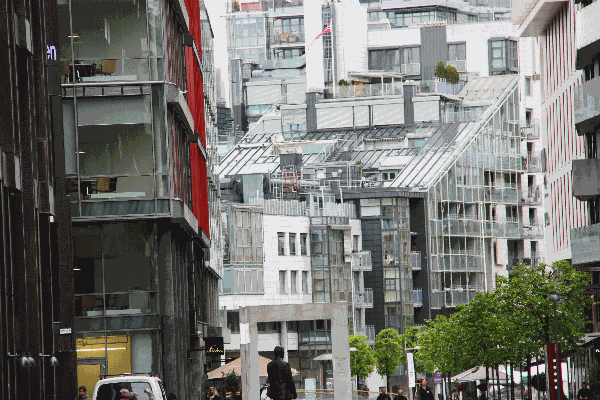
Though Tjuvholmen was a former hideout, it’s hardly isolated. It’s the westernmost extension of Oslo’s harborfront, beginning at the sturdy, twin-towered, red brick City Hall (where the Nobel Peace Prize is given out each year), passing wharves where sailboats, motor yachts and sightseeing boats bob, then curving past the Nobel Peace Center and continuing just past the waterside Aker Brygge mall to a pedestrian bridge leading to it. From City Hall, it’s a 10-minute stroll along the waterfront Stranden to Tjuvholmen, unless you stop to gawk at City Hall’s stunning Functionalist murals, see the Peace Center’s high-tech exhibits or browse Aker Brygge’s many shops.
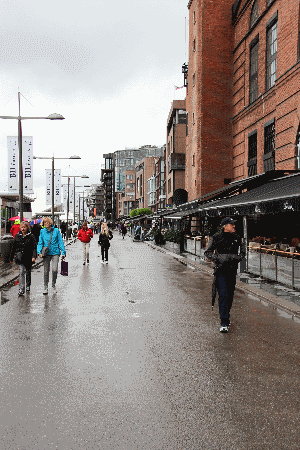
Oslo is Scandinavia’s sunniest capital, but it’s still a northern outpost, subject to brisk winds and lowering skies in late fall and winter. So, on the first sunny day of spring, legions of residents head to the harborfront. Some join tourists on historic wooden sailing vessels cruising the Oslofjord. Others nest on park benches, tilting pale faces up to the sun. Most saunter back and forth along the waterfront promenade, known as the Stranden, grinning as they push baby carriages, walk frisky dogs or stroll hand-in-hand with whoever piques their spring fever.
From just about anywhere in Oslo’s city center, you can walk to the harborfront in 15-20 minutes and join the gleeful throng. Just watch out for bicycles and baby carriages as well as the disarmingly quaint blue and white tram #12, which careens through the Stranden but, miraculously, never seems to hit anyone.
Before the new contemporary art museum opened, Tjuvholmen’s major landmark was The Sneak Peak, a 295 foot high metal tower shaped like a helix, or three-dimensional spiral. Open only on Saturday and Sunday afternoons in spring and summer, The Sneak Peak’s glass elevator spirits you to the top in a breathtaking 40 seconds for equally breathtaking views of Oslo and the Oslofjord. At the tower’s base, big granite steps lead down to the Astrup Fearnley Museum’s main entrance.
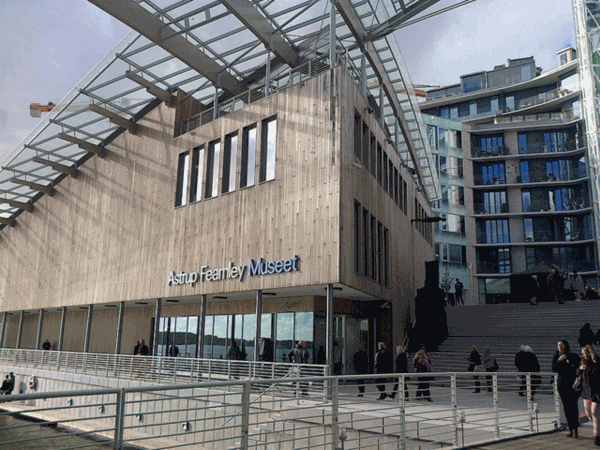
Since late September 2012, the museum has been the talk of the town. The great sail-like structure sprawls at Tjuvholmen’s tip, looking toward the Oslofjord through tall glass walls. In conjunction with Norwegian architects Norud Stokke Wiig, it was designed by Renzo Piano, who co-designed the 1977 Centre Pompidou in Paris. With a double curved roof of over 2,000 glass pieces, the building is bisected into 2 parts by a canal that divides the permanent collection from the temporary exhibits. Pale gray wood siding is a reference, architects say, to weathered warehouses along the Norwegian coast, though the planks hail from Finland, Norway and Sweden as well as Canada and Russia.
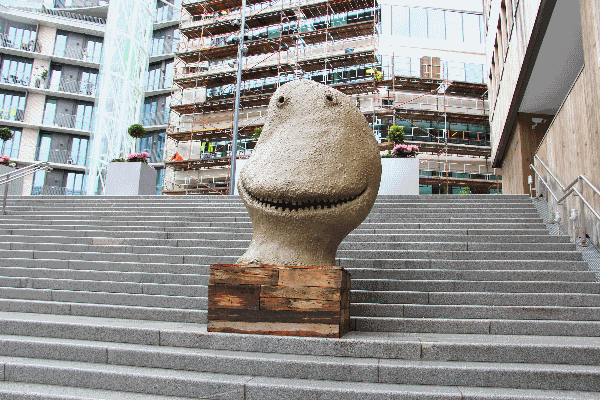
There’s a small manmade sand beach right in front with shallow water for children to paddle around in, while adults dive into the Oslofjord’s pristine waters. Surrounding the building is grassy Tjuvholmen Sculpture Park. Like the museum, it’s top drawer. Its consultant is none other than the director of the world renowned Louisiana Museum of Modern Art and sculpture park just outside Copenhagen.
The Astrup Fearnley Museum boasts Norway’s finest collection of contemporary art. Assembled by a private collector from a local shipping family, many of the international works are by Americans like Jeff Koons (known for his giant stainless-steel balloon animals), Richard Prince (whose acclaimed series, “The Cowboys,” melds photos with Marlboro Man cigarette ads) and Cindy Sherman (the star of her own outlandish conceptual portraits). Light fare is offered at the museum’s Café Renzo. Or, better yet, step outside for a bite.
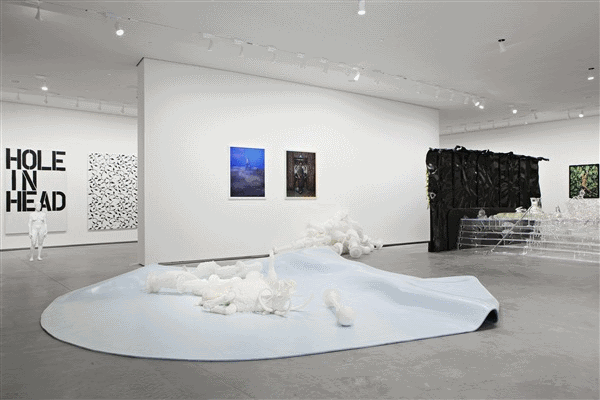
Grab a cuppa Joe and a sandwich at Wayne’s Coffee, with hip baristas and a somewhat retro look. For a waterfront picnic, pick up provisions from the deli at Olivia Tjuvholmen (serving pizzas and pasta at lunchtime) and fresh-baked bread and pastries from Bergshaven Bakery, now in its fourth generation. Or have a burger, salad or seafood at Bølgen & Moi brasserie.
And let’s not forget sushi. At last count, Tjuvholmen had three sushi bars – an incredible concentration of raw fish and rice studios for such a small spot, especially one so far from sushi’s homeland. But Oslo residents and Norwegians, in general, are mad for fresh fish. As are sushi chefs. And both camps appreciate good design. So, it’s actually a good fit.
Many of the district’s dozen or so galleries are along Tjuvholmen Allé, the neighborhood’s main drag. Contemporary art cognoscenti might recognize the artists, hailing from Scandinavia, but also Belgium, Germany and the Netherlands, as well as Japan, Great Britain and the U.S. For the rest of us, there’s the thrill of discovery. Cutting edge contemporary works hang at Galleri Haaken, Galleri Brandstrup and Peder Lund. At Pushwagner Gallery, hoary Hariton Pushwagner, author of the dystopian novel Soft City, displays his paintings, which The Guardian newspaper generously described as “portraits of a dehumanizing modernity” and which less charitable souls might deem “totally off the wall.”
At nightfall in Tjuvholmen, iron grates along the Strandpromenaden are aflame with fire, a traditional symbol of Scandinavian hospitality, and tiny lights twinkle under the canals’ humpbacked metal bridges. For a splurge, book a table at Tjuvholmen Sjømagasin, a spacious contemporary dining room where specialties range from salmon and pollack to Norwegian favorites like minke whale. At Fru K – named for the woman who pastured her cows on Tjuvholmen in the 1700’s – the menu lists the best of the Norwegian larder, locally sourced ingredients like apple juice from Oslo’s Apple Lang Orchard, turbo from Egersund, goat meat and cod from Munkeby.
The house cocktail at Fru K is The Thief Martini, with fresh dill and black pepper. But don’t worry if you have a few too many. Fru K is housed in The Thief, a deluxe 119 room design hotel, the first with direct access to the Oslofjord. With an on-staff art curator, the hotel is filled with Norwegian art, some on loan from the Astrup Fearnley across the street. All rooms have balconies overlooking the Oslofjord, but if you’re feeling flush, book the 1,722 square-foot Oslo Suite. Decorated with three collages by the venerable Sir Peter Blake (who designed the cover for the Beatles’ Sgt. Pepper’s Lonely Hearts Club Band album), it sports a kitchen, fireplace and sprawling roof terrace. From that lofty perch, one supposes, Tjuvholmen’s early thieves might have quit their scheming long enough to kick back and contemplate the Oslofjord’s broad blue splendor.
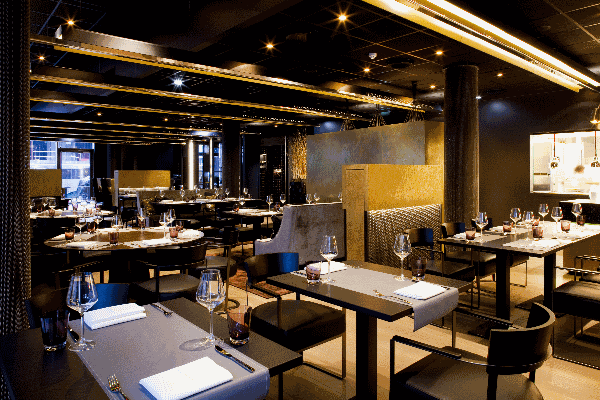
The area code for Norway is 47.
Where to Stay:
The Thief – With balconies overlooking the Oslofjord, art-filled rooms and a popular bar, this snazzy design hotel is the home of Fru K restaurant. Landgangen 1, 24-00-40-00; www.thethief.com
Tjuvholmen Executive Suites – Contemporary style apartment hotel for long or short stays. Olav Selvaags plass 4, 47-48-19-10; www.tjuvholmensuites.com
[caption id="attachment_18302" align="aligncenter" width="300"] Photo by Visit OSLO & Rod Costa[/caption]
Where to Eat and Drink:
Alex Sushi – The Japanese specialty made with Norway’s freshest raw ingredients. Strandpromenaden 9, 22-43-99-99; www.alexsushi.no
Bergshaven Bakery – Offering fresh-baked bread, pastries and sandwiches since 1907. Tjuvholmen Allé 15, 975-729-74; www.bergshavenas.no
Bølgen & Moi – Popular spot for burgers, salads and seafood. Tjuvholmen Allé 5, 22-44-10-20; www.bolgenogmoi.no
Fru K – A chic setting to sample farm fresh flavors from Oslo and beyond. Fru Kroghs Brygge 2, 24-00-40-40; www.fru-k.no
Olivia Tjuvholmen – A popular Italian restaurant and deli with indoor and outdoor seating. Bryggegangen 4, 23-11-54-70; www.oliviarestauranter.no
Tjuvholmen Sjømagasin – Sample salmon or hake in one of Oslo’s finest seafood restaurants. Tjuvholmen Allé 14, 23-89-77-77; www.sjomagasinet.no
Wayne’s Coffee – Scandinavia’s answer to Starbucks, its baristas are 100% Rainforest Alliance certified. Little Beach 4, 21-66-82-66; www.waynescoffee.no
What to See:
Astrup Fearnley Museum – In a Renzo Piano landmark, Oslo’s finest contemporary art venue features a sandy beach and sculpture park. Strandpromenaden 2, 22-93-60-60; www.afmuseet.no
Galleri Brandstrup – Explore cutting-edge works of contemporary Nordic and international artists. Tjuvholmen Allé 5, 22-54-54-54; www.brandstrup.no
Galleri Haaken – Established in 1961 and displaying the finest Norwegian and international artists. Tjuvholmen Allé 23, 22-55-91-97; www.gallerihaaken.no
Peder Lund – Specializing in both modern and contemporary artists. Tjuvholmen Allé 27, 22-01-55-55; www.pederlund.no
Pushwagner Gallery – Iconoclastic works by Hariton Pushwagner, now in his 70s. Tjuvholmen Allé 10, 22-83-16-18; www.pushwagner.no
The Sneak Peak – Ride the glass elevator to the top of this helix shaped tower for 360-degree panoramas. Albert Nordengens plass, 815-68-666. www.visitoslo.com/en/search/?q=the%20sneak%20peak

